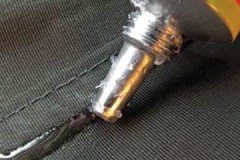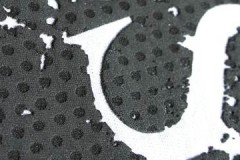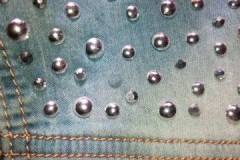Several effective ways to remove PVA glue from clothes
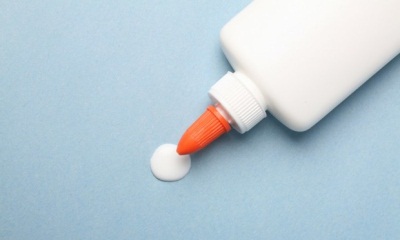 PVA glue is a reliable assistant that is used in a wide range: from children's art to construction.
PVA glue is a reliable assistant that is used in a wide range: from children's art to construction.
The polyvinyl acetate composition gives a good result when gluing various surfaces, so if it gets on the fabric, it can damage the thing.
To effectively deal with unwanted footprints, you can use homemade recipes or use special products.
In this article we will tell you how to remove glue PVA from clothes at home.
Content
How to wipe off fresh stains?
The easiest way to deal with a fresh stain is when a white blob has not yet frozen on the surface of the fabric. In this case, you will have to act quickly enough. The way to get rid of contamination must take into account the composition of the adhesive.
In PVA the main components are:
- aqueous emulsion of polyvinyl acetate;
- plasticizing additives.
Washing procedure:
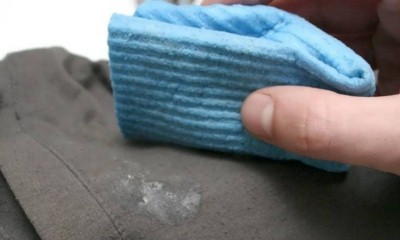 Remove the main part of the adhesive with a napkin or rag from the material. You need to act with blotting movements so as not to smudge the stain even more.
Remove the main part of the adhesive with a napkin or rag from the material. You need to act with blotting movements so as not to smudge the stain even more.- If possible, scrape off the remnants of the product with a sharp tool, moving from the edges to the center. It's better not to experiment with delicate materials.
- Hold the stained area of the fabric under running water, directing it so that the stain is rinsed out.
- In a separate container, dissolve the detergent (gel, grated laundry soap or powder) in warm water.
- Dip the thing into the washing solution.
- Soak for about half an hour.
- Rub the affected area.
- Wash the product in any convenient way.
Intense exposure should be avoided so as not to damage the fabric itself.
How to remove at home?
If the PVA stain was not noticed immediately, you will have to use more serious methods to remove it. In the event that the glue trail remains voluminous, you must first try to remove the bulk of the solidified substance.
If the fabric cannot withstand such treatment, then it is better to use soda:
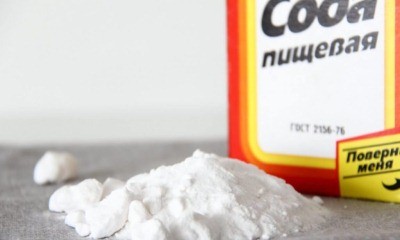 moisten and squeeze out the sponge;
moisten and squeeze out the sponge;- dip a loofah in baking soda;
- working from the edges of the spot towards the center, rub the place;
- withstand half an hour;
- wash the damaged area of the thing first;
- wash the entire product.
It is recommended to take into account the brand of glue, since its construction varieties have greater durability and better gluing ability compared to office supplies.
Vinegar
Table vinegar will help to deal with the old glue mark. This can be helpful for cleansing delicate fabrics such as chiffon.
Application:
- Lay out the product horizontally.
- Soak a sponge in vinegar.
- Put a sponge on the stained area.
- Withstand the time required for the reaction to occur, as a result of which the PVA film begins to wrinkle.
- Remove the adhesive carefully.
- Wash the product.
Alcohol
Before removing a trace of glue, the thing should be turned out to the wrong side. Operating procedure:
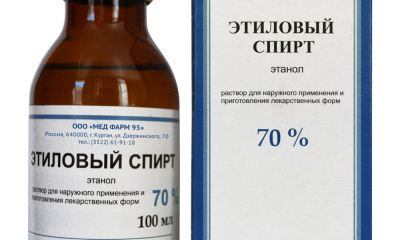 place the thing on a horizontal plane;
place the thing on a horizontal plane;- put a sheet of cardboard under the area to be processed - this will prevent the stain from moving to the other side;
- moisten a cotton sponge or swab in alcohol or vodka;
- with dabbing movements, treat the stain, ensuring the dissolution of the dried glue;
- wash in the usual way.
The use of alcohol is indicated for linen, cotton, denim fabrics. Read about removing glue stains from jeans. here.
Iron
Exposure to high temperatures helps to remove the adhesive from the material. It is convenient to use a regular iron for this.
The order of work:
- The item with the stain is placed on the ironing board.
- A piece of white cotton cloth is placed on the spot.
- Fabric is also placed under the product from the inside out.
- It is carried out with an iron, trying to absorb the glue into the additional fabric.
- Washing with powder or gel.
Ammonia
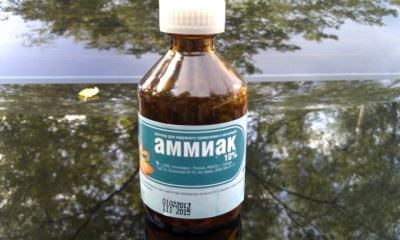 Ammonia as a cleaner can be used both independently and as a supplement to another type of treatment, for example, steam.
Ammonia as a cleaner can be used both independently and as a supplement to another type of treatment, for example, steam.
The sponge is moistened with ammonia and a good moisturizing of the stain is achieved by applying it for a quarter of an hour.... Remains of glue are removed, and the thing is re-washed.
The use of ammonia will help in cases where other means cannot be used - for example, when cleaning suede.
Freezing
The use of low temperatures is an effective approach. You can use it if the soiled item is small and can fit in the freezer of the refrigerator.
For this:
- The product soiled with PVA is placed entirely in a plastic bag.
- The package is placed in the freezer.
- Withstand several hours - enough for the glue to harden and become completely hard.
- Get out the thing.
- The product is laid out on a horizontal plane with the stained side up.
- They knock on the frozen drop with a wooden mallet so that the glue begins to break off. Shards should be removed from the fabric immediately.
- The glue mark is finalized with a knife.
- If the remains of PVA remain at the site of the former stain, they are removed with ammonia.
- Carry out a regular wash with washing powder and a little soda (1 tsp).
- Rinse the product.
Steam
Steam exposure can be effective. High temperatures can also disrupt the structure of the adhesive and contribute to its destruction.
Removing stains:
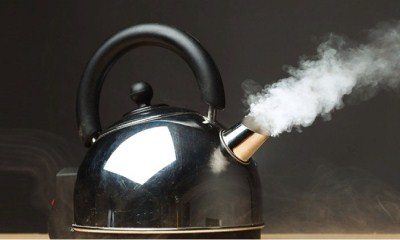 bring the kettle of water to a boil;
bring the kettle of water to a boil;- substitute the stained area of the material under a stream of steam, ensuring that the glue begins to melt;
- carefully, using tweezers, collect the glue;
- wipe the remaining trace with ammonia, diluted in half with water;
- wash the product.
When using steam, be careful not to burn yourself.
Top 3 special products
Homemade recipes may not work in some situations.... Then special drugs will come to the rescue.
Grass Antigraffiti
This product, Grass Antigraffiti, is an effective remedy for removing traces of glue, gum, scotch tape, etc.
It includes:
- Surfactant;
- organic solvents and other components.
The cost of a 0.6 liter bottle. with a spray - about 300 rubles. The drug is also produced in a volume of 5 kg, in cans.
Advantages:
- efficiency;
- economical consumption;
- affordable price for a fairly large volume.
Disadvantages:
- strong unpleasant odor;
- may damage the material;
- does not cope with all traces of glue on the fabric.
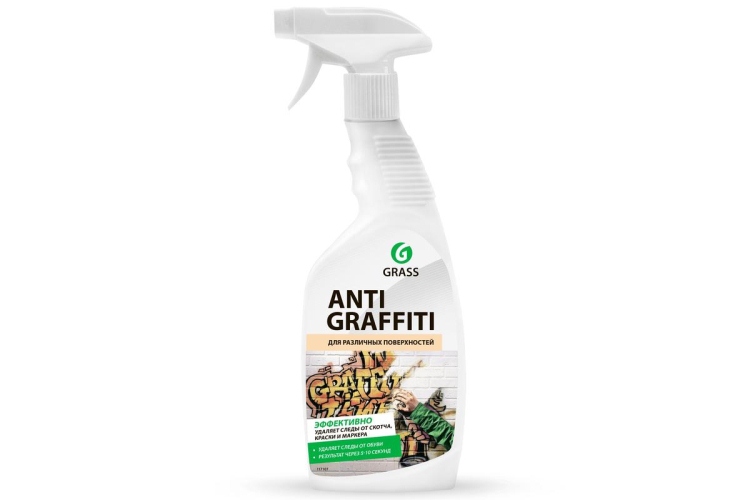
Duty Universal
The product is a professional remover of glue and adhesive base for stickers, adhesive tape, etc. The tool has an enhanced effect, it is produced in Russia.
Composition:
- Nonionic surfactants - 5%;
- isobutane;
- D-limonene;
- organic compounds.
Advantages:
- efficiency;
- ease of use;
- may damage the surface of the material;
- quick results;
- no effort needed;
- copes with old traces average;
- good volume.
Minuses:
- pronounced strong odor;
- sometimes re-processing is required.
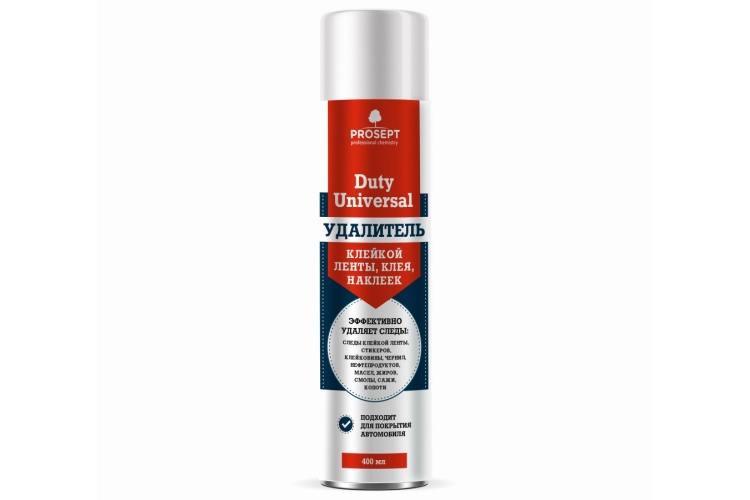
Mellerud
The 0.25 liter bottle is produced in Germany. It removes glue marks as well as other stains such as lipstick stains, ink stains, etc. Price - 450 rubles.
Order of use:
- Soak a napkin in Mellerud.
- Moisten the spot area.
- After the reaction has passed, the remaining glue can be cleaned off.
- Rinse the surface of the material under water and wash in the usual way.
The tool has good reviews. Its downside is the high cost for a small volume and the need to repeat the processing in some cases.
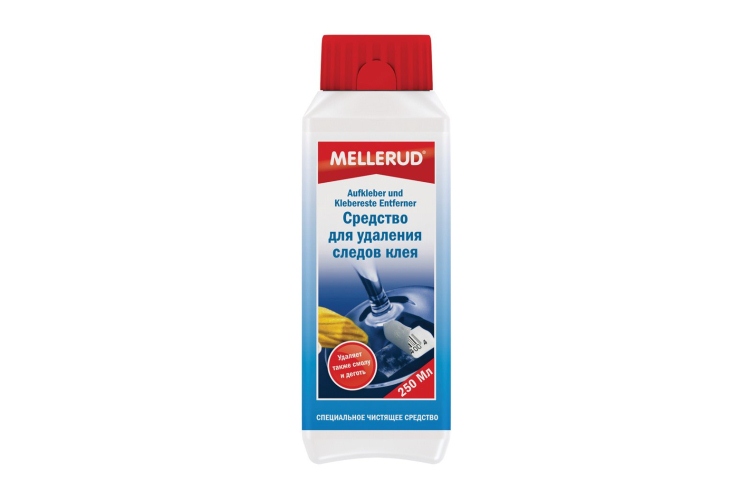
Recommendations
Deal with the problem of PVA glue marks on clothes the following tips will help:
- Solvents that are aggressive in their effect can damage the fibers of the fabric, so their use should be limited, and only used when other methods have not helped.
- Removing stains, especially with chemicals, is best done with rubber gloves.
- The longer the stain remains on the material, the more difficult it will be to remove.
- The technology for cleaning things should take into account the type of fabric, its color, the presence of decor, etc.
Useful information on how to remove glue from clothing can be found in this section.
Conclusion
Despite the fact that water is present in the PVA composition, it will not work to remove old stains with a regular wash. Homemade recipes and household chemicals can help with this. In order to clean the thing, it is necessary to start acting as early as possible, trying not to allow the stains to become old.

